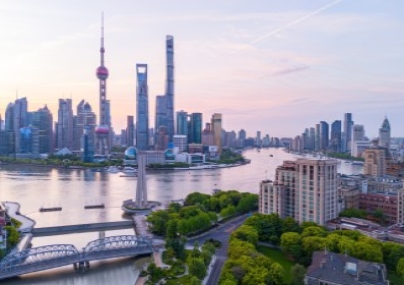U.S. private equity and investment funds are betting Asia's shipping industry, hit by a restructuring wave that has already swept Europe and the United States, is the best spot to ride a recovery from the industry's worst downturn in three decades.
Sturdy commodity demand growth and slower new ship deliveries will help balance fleet and cargo demand for the first time since 2004, analysts say, boosting freight rates by next year and into 2015.
For private equity looking to buy into the upturn, Asian shipping firms undergoing restructuring like South Korea's STX Pan Ocean Co Ltd and Indonesia's Berlian Laju Tanker Tbk PT offer opportunities. The ships investors are looking for are also being built in the region's yards.
Gregg Johnston, a partner at Stephenson Harwood in Singapore who specialises in ship finance, says that while private equity firms in New York have been striking up shipping deals for about three or four years now, the last 12 to 18 months have seen a greater appetite for Asia-based private equity deals. “The reasons it has taken longer are partly geographical,” he says. “Most PE funds are based in New York. Also, Asian ship owners had a lot of other alternatives for financing; they could rely not just on European banks but on Chinese banks and ECAs, and also Korean banks and ECAs for example. But those avenues are not open to all ship owners here, and that’s given private equity an opportunity.”
More than $3.5 billion has been invested in ships and shipping containers so far this year, according to figures compiled by publication Marine Money, compared with $2.7 billion in 2012 and $4.2 billion in 2011.
"My guess is that unless the public markets open quickly, there will be at least twice as much private equity commitment to the industry by the end of 2014," billionaire private equity investor Wilbur Ross said at a ship finance conference in New York in June.
Joseph Swanson, managing director of U.S.-based investment bank and restructuring firm Houlihan Lokey, says his company is advising on everything from ship acquisitions to complex restructurings of fleet operators, and some of these projects are in Asia.
Johnston says ship owners in Asia are more open to non-traditional finance today. “There’s not a lot of debt finance going around, so ship owners need to go out there and look for solutions,” he says. “Given that shipping has been in a crisis mode for the last four years or so, and ship values have plummeted across all sectors of shipping – with charter rates having dropped significantly – it means that not only are ship owners finding it difficult to tap into traditional sources of finance, they also need the finance more than ever. This is either because the trading capacity is diminished, or the debt that they took on during previous deals needs to be refinanced, or, in some cases, they may have significant loan-to-value breaches under those traditional ship financings and need to come up with a solution to satisfy their banks and avoid defaults.”
He adds that with private equity always being on the lookout for a home for its capital, and in search of yield, shipping presents a good opportunity in the sense that there’s a lot of demand for the finance it is offering. “The way that private equity’s looking at this is like a counter-cyclical move in that depending on how they structure the deal, there’s a significant upside,” he says. “Ship values are now at historic lows. If you see a recovery of 10 to 20 percent on a significant package of ships, there’s a significant gain that private equity can look to realise, especially when you understand that a capesize vessel or a newbuild is half the price today than what it was five years ago.”
Given that are these are still assets that produce income, there’s still significant potential for capital appreciation. “So this is what has gotten private equity interested in shipping right now, because they see this as the bottom of the market, and it will recover from here on. So not only can they look to create some yield, but there could also be some significant capital appreciation on top of that,” says Johnston.
The shipping industry splurged on new ships in 2007-08 that were delivered just as demand slumped, particularly on once-lucrative oil export routes between the Middle East and Asia.
The spree sent charter rates down as much as 90 percent and halved the value of vessels bought at the top of the market, according to data from maritime consultancy Clarkson Research Services. The list of Asian shipping firms seeking rescue is lengthening.
STX Pan Ocean, which got court approval to restructure on June 17, is the biggest shipping failure in Asia. It had a total debt of $4.94 billion as of the first quarter of 2013, its main creditor has said.
"Anybody who owned a ship for three or four years and still owns it is a candidate for restructuring," says Paul Leand Jr., chief executive of AMA Capital Partners, a New York-based maritime merchant bank. "People are running out of money to pay operating costs and interest."
With European banks facing stricter capital requirements at home, traditional ship financing is harder than ever to obtain, further boosting the allure of private equity investment.
Bank lending to the shipping industry via syndicated loans at $52 billion last year was nearly half the $91.8 billion in 2008, just before the financial crisis, according to figures from Dealogic and Marine Money.
Raft of deals
The interest from private equity is being driven by expectations that the shipping industry will finally pull out of a prolonged slump.
Barclays Bank estimated in a June report that the volume of seaborne dry cargo will start to outpace fleet growth by next year, increasing by 6.3 percent against a 3.8 percent uptick in vessel supply.
The price of new dry bulk and container ships has risen by up to 2.5 percent in the last three months, according to Clarkson data, after falling since 2010. Over the same three-month period, prices for second-hand dry cargo ships have climbed by up to 18 percent.
"Lots of funds are running around and ordering new ships, or at least trying to," says Tim Huxley, chief executive of Hong Kong-based ship-owner Wah Kwong Maritime Transport.
"It will need patience as there won't be an overnight bounce back, but it’s got plenty of potential if you partner up with the right people."
U.S. private equity firm Alterna Capital Partners ordered four tankers costing a total of $130 million in June from South Korea's Hyundai Mipo Dockyard ship brokers in a continuing investment in the tanker sector. Managing partner Jim Furnivall declined to comment.
In May, U.S. investment group York Capital Management struck up a joint venture with Greek-owned container ship operator Costamere to spend $500 million acquiring ships.
Other deals include New York-based Oaktree Capital Management teaming up with German ship owner Rickmers to order up to 16 container ships. The vessels will be built at an undisclosed Asian shipyard for delivery by mid-2015.
Alvarez & Marsal is conducting due diligence on behalf of several private equity funds looking at investments in Asia, according to Ray Dombrowski, a managing director at the corporate advisory firm in New York.
The funds are looking at as many as 20 ships in the dry bulk and tanker sector that have been ordered but are not yet under construction at shipyards in China, South Korea and Japan, he adds. "They believe the ships that are being built are more economic, with more efficient engines, so the cost of operating them will be significantly lower," Dombrowski says. "They are large U.S.-based global funds who want to be well positioned when the recovery in the shipping market picks up in earnest."
A different kind of business
Industry experts agree that the shipping business is quite different from industries that PE funds traditionally target. “For one, you take on large risks like environmental spills and so on, and as it is a global business, you are exposed to the rules and laws of various jurisdictions,” says Siri Wennevik, Singapore-based partner at Wikborg Rein. “It can also be different in terms of business culture. Imagine a traditional family-owned shipping company that has been running for more than 100 years having to deal with a PE firm that just comes in with a bunch of new ideas … I figure the two would have different ideas on how to run the business.” As an example, she says traditional ship owners, particular those that are used to running their business in their own way, aren’t going to like the reporting procedures that PE firms have.
Johnston of Stephenson Harwood notes that if it’s a dry-bulk shipping company, then there’s a limit to what new management or innovation provided by private equity can achieve. “It’s a capital-intensive business, so it comes to how many ships you own and how many charters you’ve got,” he says. “If it’s a deal where the PE firm acquires a controlling stake, then they would like to take over the management of the company, and bring in various consultants and management gurus and different types of innovative strategies of how to manage the business, cut costs, and restructure.” While there’s scope to do that in terms of other kinds of businesses, there’s less scope in shipping. “The best business minds in the world can come into a deal, but if the dry bulk industry is at an all-time low and you’re a dry bulk player, your vessel values have plummeted and you owe tens of millions of dollars in debt to your ship finance bank and your spot charter rates are at an all time low, there’s not a lot a change of management will do,” he adds.
Johnston says that what PE firms have to keep in mind is that a lot of private equity deals are done on a leveraged basis. “They’re not looking to use their own funds but instead, leverage on existing debt to traditional banks,” he says. “They should understand that if they don’t have a name in this, or their target company doesn’t have a network of traditional finance banks, they’ll meet the same problems ship owners face in securing finance.”
Wennevik notes that for a PE investor getting into shipping, “you need to have knowledge of the industry and all the perils it brings. If you don’t understand the industry, your risk profile could be astronomical, including, for example the environmental risks that ship owners face.” She adds that operationally, as fuel makes up about 70 percent of the day-to-day expenditures, a small increase in fuel, or constantly changing regulations relating to sulfur emissions can have a real impact.
Follow us on Twitter: @ALB_Magazine.
.jpg) that has already swept Europe and the United States, is the best spot to ride a recovery from the industry's worst downturn in three decades.
that has already swept Europe and the United States, is the best spot to ride a recovery from the industry's worst downturn in three decades.

